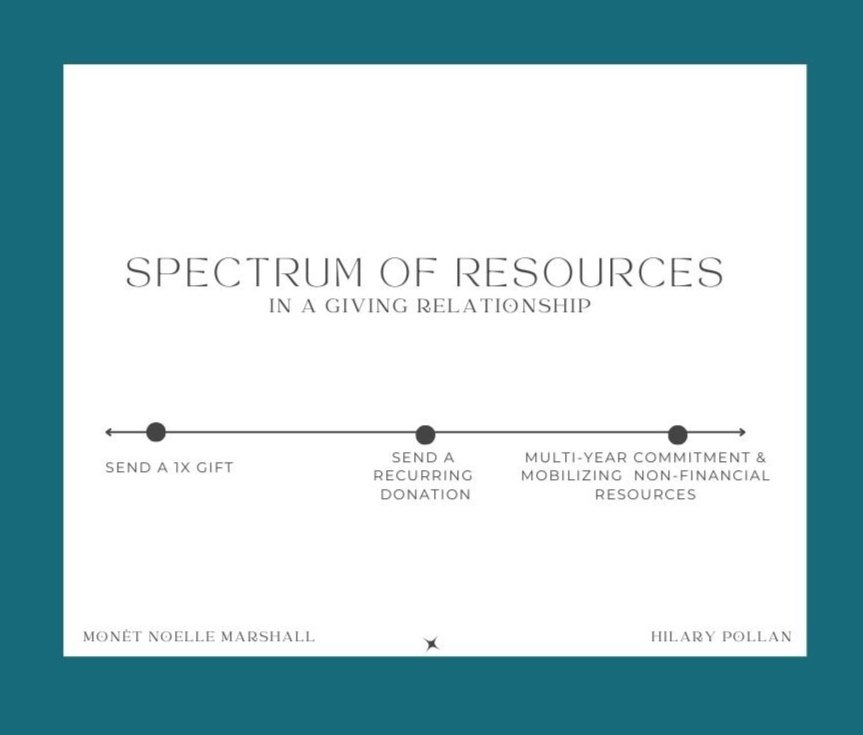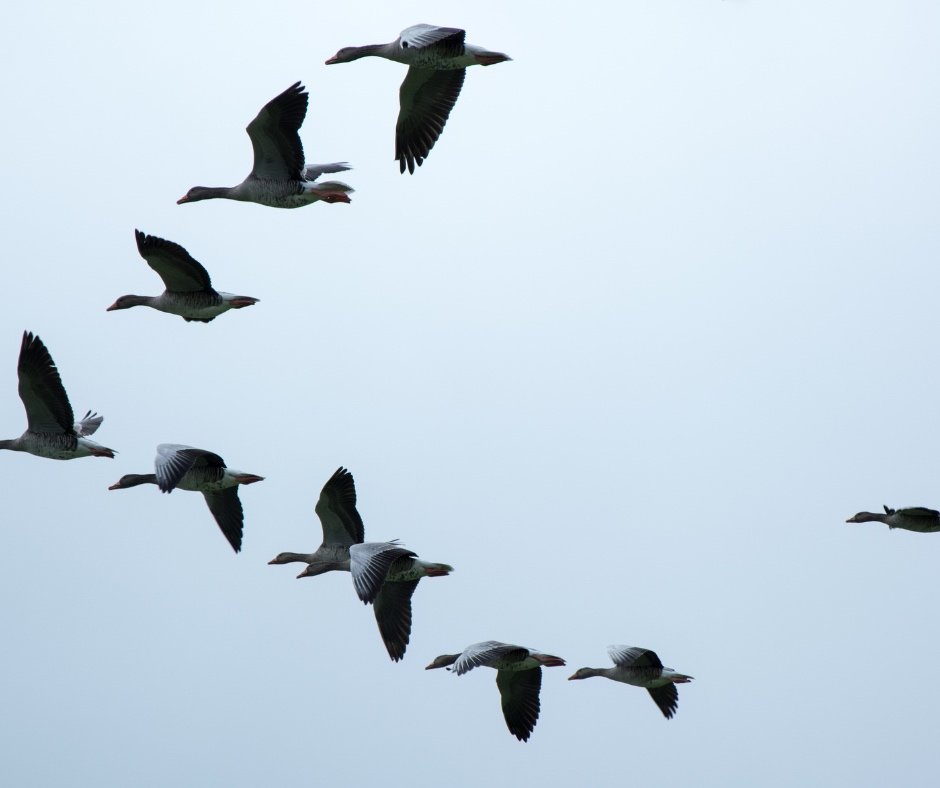Welcome to the 3rd and final post in the series! In the previous post we shared a spectrum of resources available in a giving relationship between a Cultural Organizer and a Donor and the important questions for both parties to ask themselves as they develop the giving relationship. In this post, we will explore how Cultural Organizers and Donors can relate to each other in ways that honors the humanity and desires of everyone involved.
Spectrum of Relationships
In addition to money, a Giving Relationship relies on establishing and stewarding a relationship, which is honestly a super power of Cultural Organizers!
How would you like to engage in this relationship?
Like all relationships, there is a lot to navigate when starting a new giving relationship. Are you looking for the same things? Do your values align? Do you require a relationship that you can be vulnerable with? Someone you can share wins and challenges with? Someone who sees you beyond your role as a cultural organizer or donor and instead as a whole person? Is it important for you to know each other personally? So many questions.
All giving relationships will look different. The shape will depend on both the Cultural Organizers and Donors capacity and desire to engage. We like to think of this space of engagement as existing on a spectrum from No Engagement to High Engagement
No engagement may look like the donor just sends money, likely after an initial conversation but maybe with even less engagement, such as having attended an event, choosing to sign up as a Patreon/monthly donor and/or following the cultural organizer/artists on social media or via newsletters. The donor commits to staying moderately informed, and remains accountable for their moving money commitment – but that’s where the relationship basically ends.
Initial Engagement There’s interest in the part of both the Cultural Organizer and the Donor in potentially initiating a relationship. This can come from having met at an event, being connected through other people in their community. It doesn’t assume that a relationship will form, but has aspirations.
Low/Medium Engagement may look like having regular check-ins. A check-in is an opportunity for the cultural organizer/artists and donor to:
Get to know each other on a personal level (with boundaries of course!)
Receive updates on project(s) or new opportunities (donors can share too within reason)
Maintain the giving relationship, such as discussing any changes to money amounts or how the money is moved and/or if/how the relationship may evolve
These check-ins may occur annually or on a more frequent basis. Part of the relationship is defining together the frequency and format of these check-in conversations.
High Engagement is when the Cultural Organizer/Artists and donor decide to become co-conspirators. The co-conspirator relationship is defined by:
Having an trusting, authentic relationship between the Cultural Organizer/Artists and Donor with open and reflective communication
Feeling deep values-alignment
Having accountability beyond moving money that asks the donor to mobilize other resources, such as connections, relationship, space, risk and power
Donors showing up at the request of the Cultural Organizer/Donor
A final note on the topic of level of engagement for Cultural Organizers!! You do not have to fake a relationship in order to deserve resources. We repeat, YOU DO NOT HAVE TO FAKE A RELATIONSHIP IN ORDER TO DESERVE RESOURCES.
How would you like to acknowledge the donor’s support?
Gone are the days when (most) donors expect galas thrown in their honor as a sign of gratitude. Thankfully. Which means that you have the opportunity to reimagine how to offer gratitude in ways that are in alignment with your values. If 1 is “never acknowledge donors publicly/desire to remain anonymous” and 10 is “shout your thanks from the rooftops”, where do you fall?
How would you like to share the impact of the resources?
This in many ways goes back to determining the “Level of Engagement”, and is also a place where the Cultural Organizer is the Guiding Agent in this relationship. The Cultural Organizer’s answer to this question could be, “I don’t want to.” And that’s completely valid. If the donor is part of the community, one could hope that they are experiencing the impact of the work naturally. But when that isn’t the case, discuss how you want to share the impact of your work, if at all.
How do you navigate a mismatch in desire and capacity in a giving relationship?
All cultural organizers and donor connections are not made equal. You may develop a deep and meaningful friendship with one person and not click with another. That is ok. Take the time to really feel if there is alignment between what you all are hoping to steward and create in this giving relationship. If you feel the mismatch, call in the other person, with gratitude that recognizes both side’s humanity, and determine what real next steps look like. There will be other donors and cultural organizers to connect with!
Relationship in Practice: A Donor’s Perspective
In one of my earliest giving relationships as a donor, a cultural organizer told me in our first conversation that all they wanted from me was money. While I now feel that’s a completely justified request, at the time I felt a little put off. I wanted to build a relationship with this person and their project, but, actually, what felt like an absence of relationship was in fact a defined relationship based on the cultural organizers capacity and their request for trust from me.
-Hilary Pollan
This is the third in a 3-part series on stewarding a giving relationship between donors and cultural organizers. This blog series is co-created by myself and the excellent donor organizer, Hilary Pollan. This series comes ahead of An Exploration of Southern Cultural Organizing on April 16. During this participatory event we will expand our collective understanding of cultural organizing through conversation with Triangle NC-based artists and cultural organizers Derrick Beasley, Mike Williams, and Omisade Burney-Scott. There will be opportunities to connect and engage with other donors, funders, and cultural organizers, and explore how to engage in a giving relationship to support this transformational work.




